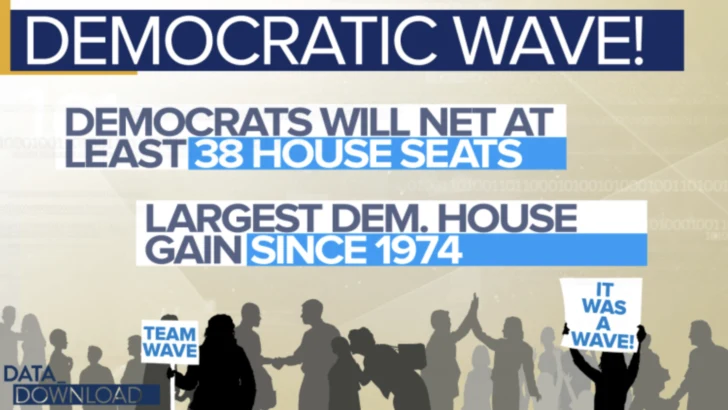A “wave election” is a term used to describe a significant electoral shift in which one political party makes substantial gains in seats in a legislative body, often resulting in a change of leadership.
The term “wave” is used to describe the sweeping nature of the electoral shift, with one party gaining seats across the country in a relatively short period of time.
Wave elections often occur when there is widespread dissatisfaction with the current political climate and voters are looking for a change.
This can be driven by a number of factors, including economic downturns, international events, or major political scandals. In some cases, a wave election may be spurred by a charismatic political leader who is able to inspire voters and tap into their desire for change.

While there is no agreed upon definition of what constitutes a wave election, a “blue wave” is when Democrats make significant gains and a “red wave” is when Republicans wins a substantial number of seats.
Mark Barabak explains:
There is no authoritative definition of a wave election. (Which is not to be confused with a realigning election, like those in 1932 and 1968, in which a party forges a new and enduring presidential coalition.) A wave election is commonly considered one in which a political party wins a large and lopsided number of House and Senate seats while sustaining minimal losses.
In the past 20 years, there have been several wave elections of that type, including 1994 when Republicans netted 54 House and 10 Senate seats; 2006 when Democrats won 31 House and six Senate seats; 2008 when Democrats gained 21 House and eight Senate seats, and—most spectacularly—the last midterm vote, in 2010, when the GOP won 63 House seats and four in the Senate.
More from Jacob Smith:
Unfortunately — and surprisingly given the widespread use of this term — there is not a precise definition of this concept. To try to correct this, I have developed my own definition that combines both scholarly rigor with the basic intuition of a wave election being a ‘big win’ for one side at the expense of the other.
Specifically, I define a “wave election” to be a congressional election that (1) produces the potential for a political party to significantly affect the political status quo as (2) the result of a substantial increase in seats for that party.
Wave elections can have a significant impact on the political landscape, as they often result in a shift in the balance of power between the two major political parties.
For example, if one party makes significant gains in a wave election, they may be able to gain control of the legislative body and implement their policy agenda. This can lead to major changes in the direction of the country, as the new party in power has the ability to pass laws and shape policy.
On the other hand, wave elections can also lead to political gridlock if the opposing party retains enough seats to block legislation. In this case, the party in power may be unable to pass their policy agenda, leading to frustration among voters and potentially setting the stage for another wave election in the future.
A political party often declares a mandate after a wave election.
Use of “Wave Election” in a sentence
- The 2022 wave election resulted in a significant shift in the balance of power in Congress, with the Democratic Party gaining control of the House of Representatives.
- Many political analysts believe that the 2024 presidential election could be a wave election, as voters are increasingly frustrated with the current administration.
- The Republican Party’s success in the 2010 wave election allowed them to implement their conservative policy agenda, including major tax cuts and the repeal of certain regulations.